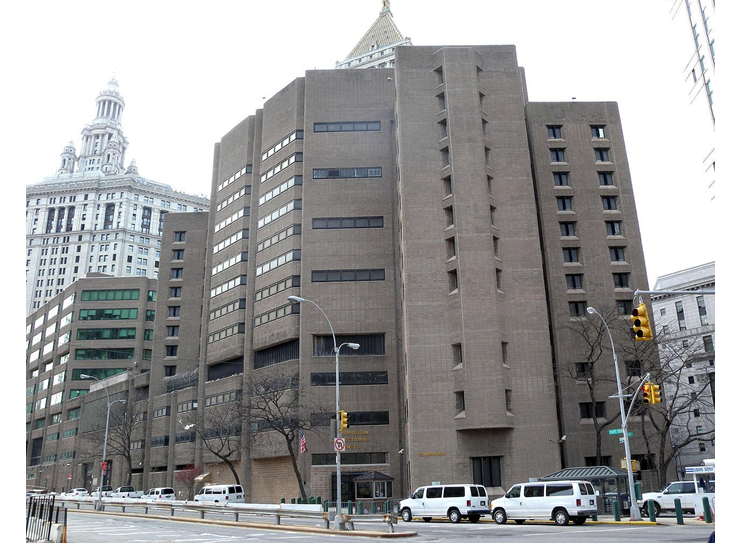Jeffrey Epstein: A Canadian Perspective
The last couple of months have seen Jefrrey Epstein’s quick arrest; imprisonment and death grip the public’s attention. A global story has been slowly unraveling for the past decade like a frayed sweater where Jeffrey Epstein was the first loose thread. Jeffrey Epstein was inmate 76318-054 at the Metropolitan Correctional Centre[i]. Epstein was arrested for sex trafficking of minors and conspiracy to commit sex trafficking of minors[ii]. Epstein “worked with several employees and associates to ensure that he had a steady supply of minor victims to abuse, and paid several of those victims themselves to recruit other underage girls to engage in similar sex acts for money”. A one-time trader and financier, Epstein allegedly owned the largest townhouse in Manhattan, and a lot of other properties across the globe[iii]. He was known by and befriended many powerful people. This article will look at the history of the Epstein case, up to his death, and will then briefly discuss how Canadian law might have dealt with somebody in Jeffrey Epstein’s situation.

Epstein and Trump pose together for a photo in 2000
Epstein and Prince Andrew walk together in this photo from New York’s Central Park
Epstein’s most recent arrest and imprisonment wasn’t his first brush with the law. That all started in March 2005, when a woman in Florida telephoned the police to report that her 14-year old step-daughter had sex with a middle-aged man who gave her money[i]. By May, 2006, Epstein was charged with multiple counts of unlawful sex acts with a minor[ii].

Epstein’s mugshot from July 27, 2006
Julie K. Brown of the Miami Herald reports that Epstein’s team negotiated hard, pushing for a deal involving no jail time. The US Attorney’s office alleged that Esptein’s victims had been harassed by his lawyers, and eventually the Justice Department opined that Epstein could be federally prosecuted if no deal were reached. This obviously made life more difficult for Epstein. Esptein’s lawyers doubled down in their efforts, resulting in a deal for Epstein. Despite his power and connections, even Epstein could not get away scot free. Although the deal he obtained was very favorable, he too had to compromise. In 2008, Epstein plead guilty to one count of solicitation of prostitution and one count of solicitation of prostitution with a minor under the age of 18. He was sentenced to 18 months of jail, and 1 year of house arrest/community control. He was also required to register as a sex offender. The deal was criticized by many people as letting Epstein off easy[i]. Regarding the deal, and the then U.S. Attorney’s involvement in it, President Trump himself said that “we’ll look at it very carefully”[ii]. A prosecutor’s job can be difficult, and securing a conviction in the face of a strong and knowledgeable legal team can dissuade prosecutions. It seems like that’s what happened with Epstein, Alexander Acosta, the US Attorney who oversaw the deal, defended his actions by noting that the deal ensured Epstein faced some jail time, and that he had to register as a sex offender, and going to trial to seek a stiffer sentence would have been “a roll of the dice”

Epstein in custody in West Palm Beach in 2008, Photograph: Uma Saghvi/AP
Esptein entered a work release program, meaning that his private driver would pick him up in the morning and transport him to his office to work for up to 12 hours a day – Epstein would return to jail at night to sleep . He served 13 months of the 18, according to Global News’ Kerri Breen . He was also required to serve a year’s probation .
By 2010, Esptein’s butler reported witnessing nude underage girls at Epstein’s pool, he reported knowing that Epstein was having sex with them, and he reported seeing pornography involving underage girls on Epstein’s computers. He tried to sell an undercover FBI agent a copy of Epstein’s little black book. The book was filled with the names of hundreds of girls. The butler was charged with obstruction of justice, and sentenced to federal prison, where he later died .

Jeffrey Epstein’s Palm Beach mansion
2010 also marked the appearance of Epstein’s flight logs. The logs showed a number of powerful and well connected people flying on Epstein’s jets in the early 2000s, including powerful figures such as former President Bill Clinton, former Prime Minister Tony Blair, Michael Bloomberg, Richard Branson, Rupert Murdoch, Bernie Ecclestone, Prince Andrew, Alan Dershowitz, and President Donald Trump. In 2011, Epstein was required to register as a Level 3 sex offender, meaning a “high risk of repeat offense and a threat to public safety exists”, pursuant to New York guidelines

A copy of Epstein’s flight logs showing a trip by Bill Clinton in 2002, along with others
That one telephone call in 2005 started the unraveling of powerful networks. Paul Lewis for the Guardian reported in 2015 that Epstein’s list of clients includes Les Wexner (whose empire includes Victoria’s Secret), Kevin Spacey, and Naomi Campbell[i]. A number of civil suits were launched in 2015 alleging that Epstein was running an international sex trafficking ring[ii]. More suits followed the years after which were largely settled. Some, like a malicious prosecution counterclaim filed by a lawyer who had represented Epstein’s accusers, were confidentially settled on the first day of trial.

A photo of Epstein’s private plane at Palm Beach International Airport in 2018, Photo: Emily Michot/Miami Herald
Then, on July 8, 2019, Epstein was charged with sex trafficking of minors, and conspiracy to commit sex trafficking of minors[i]. That would be his final run-in with the law. Epstein allegedly worked with several employees and associates to ensure that he had a steady supply of minor victims to abuse, and paid several of those victims themselves to recruit other underage girls to engage in similar sex acts for money. Almost exactly one month later, on August 10, Epstein was found dead in his jail cell, apparently of suicide[ii]. Many conspiracy theories popped up in the days after his death, largely due to the irregularities at the jail in question. Despite an apparent suicide attempt on July 23, Epstein was taken off suicide watch[iii]. The guards then failed to follow proper procedures, and apparently both fell asleep. Indeed, the FBI opened an investigation into Epstein’s death[iv]. Many have called for answers.

The Metropolitan Correctional Centre, where Epstein died
Epstein apparently paid lawyers to visit him and spend up to 12 hours a day with him in a meeting room, sometimes sitting in silence. But in his final days, Epstein’s morale seemed to drop. Christina Goldbaum for the New York Times reports that he rarely bathed, and slept on the floor of his cell[i]. Eventually, guards found Jeffrey Epstein unresponsive, tinged blue, and hung by a jail bedsheet[ii]. The conditions in the prison were said to be terrible, including vermin infestations, like cockroaches and mice, and faulty plumbing which leaked urine and fecal matter. Epstein’s death was ruled a suicide by hanging
What If Epstein Had Been Canadian?
One wonders if Epstein would have had a different experience, if he had been Canadian, and arrested in Canada. One key difference between Canada and many American jurisdictions is the age of consent. In many American jurisdictions, a person must be 18 to consent to sex. In Canada, section 150.1 of the Criminal Code sets the age of consent at 16. That being said, many of Epsteins victims are alleged to have been under 16, so that would not have helped him.
If he’d been Canadian, Epstein may have been charged under sections 151-153 of the Criminal Code, RSC 1985, c. C-46[iv]. Those sections include sexual interference with a person under 16 years of age, invitation to sexual touching, and sexual exploitation. Epstein may also have been charged with making, accessing, and distributing child pornography, under section 163.1 of the Criminal Code. These are very serious offenses, and have very serious penalties attached to them. For many of them, the maximum jail term is 14 years. Epstein may also have been charged under s.286.1(2), for obtaining sexual services for consideration from a person under 18 years, which also carries a maximum term of imprisonment of 10 years. Epstein’s alleged trafficking of minors could have attracted a charge under s.286.2 as well, as he may have been receiving a benefit from sexual services provided by persons under 18, or under s.286.3 for procuring a person under the age of 18. Like some of the earlier offenses discussed, these also carries a maximum of 14 years. The newest allegations against Epstein could have attracted charges under sections 279.01, 279.011, 279.02, and 279.04, which are all offences dealing with trafficking of persons, and obtaining a benefit from it. Many of these offenses also carry the 14 year maximum.
Going to court is complicated. There are many rules to be followed, and missteps can have dire consequences. Jeffrey Epstein hired some of the best lawyers available, and even he had to serve time. Despite that, his lawyers helped him secure a deal with garnered national and international attention. He was allowed to work, and return when needed. Of course, everyone’s situation is different, and there is never a guarantee of a particular result. Although the wording of Canadian law is somewhat different, and the approaches used are different, similar offences exist for similar actions. Having a practical and knowledgeable criminal lawyer with experience in dealing with the offence you’re facing is crucial to fairly navigating the system, and in obtaining a fair result. It can be the difference between a conviction being almost certain, or it being a ‘roll of the dice’.
At Daley, Byers Criminal Lawyers we have, throughout our 38 years of criminal defence law experience worked with and helped innumerable clients in a variety of cases including:
Helpful Links
You can find our sources below. You can find the Criminal Code of Canada here: https://laws-lois.justice.gc.ca/eng/acts/c-46/. The Department of Justice maintains a website that talks about certain offenses here: https://www.justice.gc.ca/eng/cj-jp/index.html. Human trafficking – the type of offense Jeffrey Epstein was accused of, is discussed in more detail here: https://www.justice.gc.ca/eng/cj-jp/tp/what-quoi.html.
https://www.theglobeandmail.com/world/article-inmate-76318-054-the-last-days-of-jeffrey-epstein-3/
[1]https://www.justice.gov/usao-sdny/pr/jeffrey-epstein-charged-manhattan-federal-court-sex-trafficking-minors
[1]https://www.theguardian.com/us-news/2015/jan/02/jeffrey-epstein-rise-and-fall-of-teacher-turned-tycoon
[1]https://www.vanityfair.com/news/2019/07/trump-and-epstein-and-28-girls-new-york-times
[1]https://www.theguardian.com/world/2015/jan/10/jeffrey-epstein-decade-scandal-prince-andrew
[1]https://www.theguardian.com/world/2015/jan/10/jeffrey-epstein-decade-scandal-prince-andrew
[1]https://www.miamiherald.com/news/local/article221404845.html
[1]https://www.latimes.com/nation/politics/la-na-pol-trump-acosta-epstein-20190709-story.html
[1]https://www.cbc.ca/news/world/dc-acosta-epstein-1.5204962
[1]https://www.nytimes.com/2019/07/10/us/politics/acosta-epstein.html
[1]https://www.theguardian.com/world/2015/jan/10/jeffrey-epstein-decade-scandal-prince-andrew
[1]Supra, Miami Herald, note 7
[1]https://globalnews.ca/news/5750853/jeffrey-epstein-case-timeline/
[1]Supra, Miami Herald, note 7
[1]Supra, Miami Herald, note 7
[1]https://www.mirror.co.uk/news/uk-news/prince-andrew-been-secretly-filmed-4915421
[1]https://www.theguardian.com/us-news/2019/aug/10/jeffrey-epstein-trump-clinton-friends
[1]Supra, Miami Herald, note 7
[1]https://gawker.com/flight-logs-put-clinton-dershowitz-on-pedophile-billio-1681039971
[1]https://www.theguardian.com/us-news/2015/jan/02/jeffrey-epstein-rise-and-fall-of-teacher-turned-tycoon
[1]Supra, Miami Herald, note 7
[1]https://www.cnn.com/2018/12/04/politics/jeffrey-epstein-lawsuit-settled/index.html
[1]https://www.miamiherald.com/news/local/article220097825.html
[1]https://www.justice.gov/usao-sdny/pr/jeffrey-epstein-charged-manhattan-federal-court-sex-trafficking-minors
[1]https://www.nytimes.com/2019/08/15/nyregion/newyorktoday/jeffrey-epstein-suicide.html
[1]https://nymag.com/intelligencer/2019/08/jeffrey-epstein-dies-by-suicide-report.html
[1]Supra, note 25
[1]https://commons.wikimedia.org/wiki/File:MCC_New_York_jeh.JPG
[1]https://www.theglobeandmail.com/world/article-inmate-76318-054-the-last-days-of-jeffrey-epstein-3/
[1]Supra,note 28.
[1]https://www.cbc.ca/news/world/medical-examiner-epstein-death-suicide-hanging-ruling-1.5250432
[1]https://www.canlii.org/en/ca/laws/stat/rsc-1985-c-c-46/latest/rsc-1985-c-c-46.html
At Daley, Byers Criminal Lawyers we have, throughout our 38 years of criminal defence law experience worked with and helped innumerable clients in a variety of cases including:






